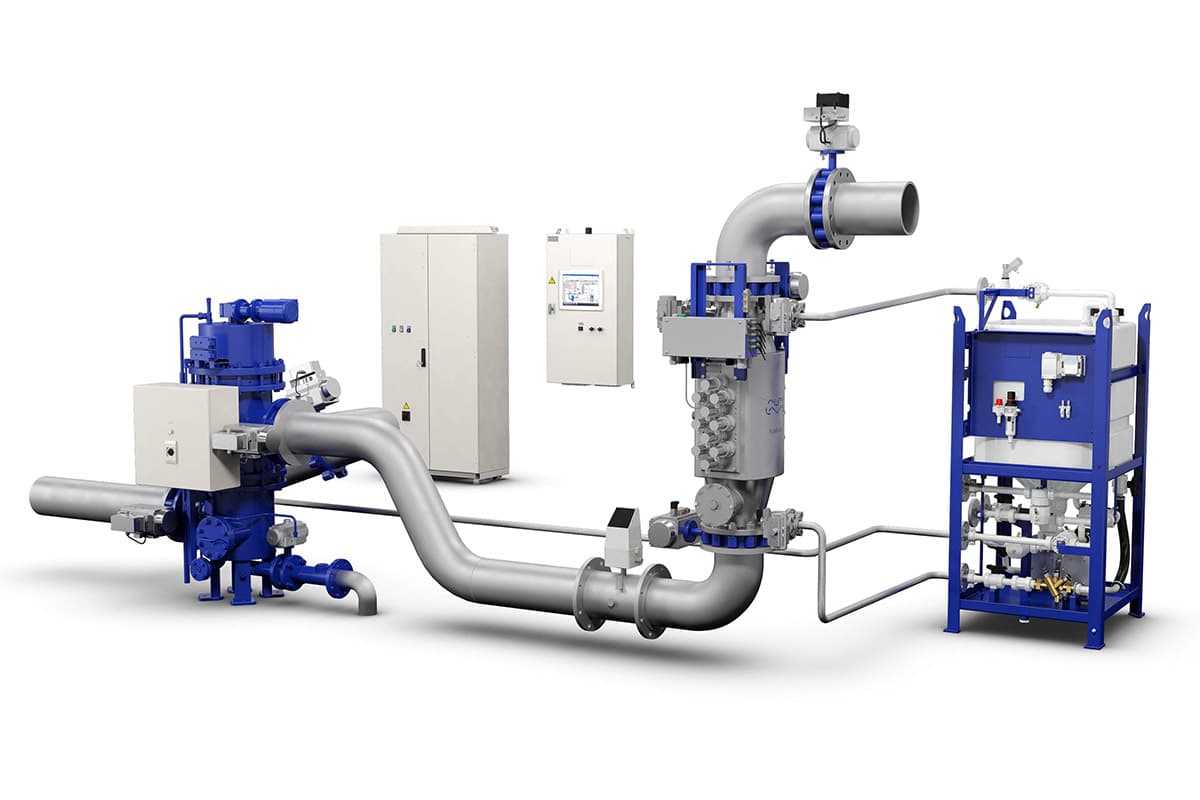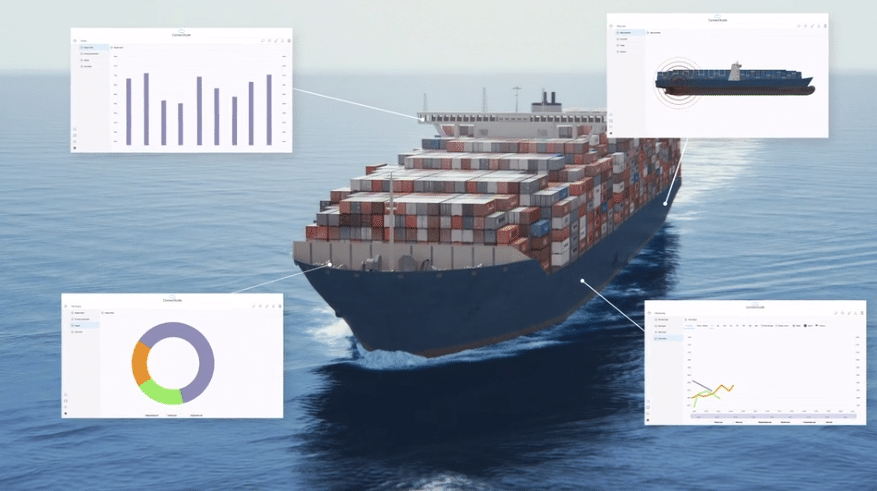At sea, an IIoT solution must be able to operate without access to the Internet. A more comprehensive software for the Edge Gateway had to be developed. This project and other solutions for marine industries has lead to the Smart Ships vertical of the Connectitude IIoT Platform™.
Ballast management and environmental risks
One of the major advantages when ships began using metal hulls was that seawater could be used for ballast. With today’s modern control systems and motorized pumps, the ballast can be optimized through an exact distribution between different tanks optimized for various conditions such as sea and waves, tons of freight and desired water line.
The major disadvantage of using seawater as ballast is the environmental risks. Pollutants, microbes, larvae and eggs etc. will be spread between different marine environments when ballast water is taken from one place and drained in another. Small populations of new and more dominant species can, in a short time, knock out well-balanced ecosystems. One of our customers is a world-leading supplier of ballast water treatment systems. They are pioneers both in their industry as well as in using ultraviolet light for eliminating micro-organisms as bacteria. They contacted us for a solution that monitored their ballast systems and offered reports for the ship crews for the processes of ballast water treatment.
Why accurate and fast ballast reports are so important
In the absence of a global legislation on ballast water management, it is primarily the US laws that are the yardstick most major shipping companies are trying to comply to. There, US Coast Guard requires that all ships must send their ballast water reports at least 24 hours before reaching US waters. The US Coast Guard also has the right to board vessels for inspections of the quality of ballast water, the condition of tanks and pumps and to check logs of the handling. Failure to comply with the regulations entails substantial fines and other penalties.
Therefore, reliable reports with high traceability of time-stamped GPS positions was necessary. The solution also had to be fully operational when off-line, since access to the Internet can vary a lot around the globe.
What our customer also wanted
Success criterias for our customers ballast water systems are, among others, high efficiency, reliability and a long and cost effective service life. Prediction and prevention of machine breakdowns and repairs was hence another of our customer’s objectives for the solution. Already on a early stage of the project, three of our customer´s deparments were involved in the agile development teams. Here are some of their focus areas, contributing to how the solution was designed.
- R&D wanted more data from the machines and their surrounding conditions, for a better and faster product development.
- The service department wanted tools for better predictions of where and when their customer would need service and spare parts. Remote access to the ballast system’s PLCs and HMIs onboard was desired for faster troubleshooting and configuration of settings.
- Sales wanted to add extra value to the systems through offering their customers reports, better service terms and attractive tools for monitoring and alarm management.
Additional challenges
All parts of the solution had to meet various marine requirements. The system should also be able to please a great variety of user’s roles and consumers of information. Onboard the ship machine operators and maintenance staff wanted monitoring of real-time values and trends for the systems. Staff and managers at land wanted to see aggregated views and do comparisons for many ships and ballast systems. At sea, the access to Internet can vary a lot. A solution that can adapt to what data it sends, and at what sample rate, based on Internet access was imperative.

The solution
The solution was developed as a hybrid of cloud services and local software, with a fully seamless user experience. The most significant difference to the edge software, installed on a physical local gateway, is that the cloud services can scale the capacity for computing and storage on demand.
The task of a local gateway in an IIoT solution is usually limited to collecting signals from different sensors and PLCs and forwarding them to the cloud. In addition to this the ballast system’s gateway provides the logic, the graphical user interface and internal database required to support all necessary functions at the local level onboard the ship. More complex analysis of data, from several different vessels are done in the cloud services with powerful tools for Business intellegence and Machine Learning.
All user features were designed as widgets to make it easy to create customize dashboards including the specific tools a person or a role requires. Granular aaccess rights down for all connected entities, down to machines and sensors, makes it easy to manage that different users only can see relevant and authorized information.
Postface
The feedback on the solution’s initial Proof of Concepts showed that users experienced the interfaces easy to use and intiuitive. The crew on the ships appreciated to always have reliable real-time information at hand without having to monitor the fixed HMIs installed locally on the ballast systems.
The possibility to share controlled access to various features and real time reports made collaborations easier and troubleshooting faster. Our customer realized that the more generic parts of the solution could be used equally successful in other systems, machines and business segments. More features were continuously added, and today the solution is deployed on more than 300 sites at sea and on land.
The marine industry vertical: Smart Ships

The solution was developed as a joint venture with our customer. For us this meant a solid foundation for the further development of the Connectitude IIoT Platform™. For you it means that you easily can create a free account to experience an elaborate and well-proven platform for industrial IoT. We have also refined the tools and features in the Connectitude IIoT Platform™, designed for marine use, to a vertical. Contact us about our IIoT platform and it’s verticals.

